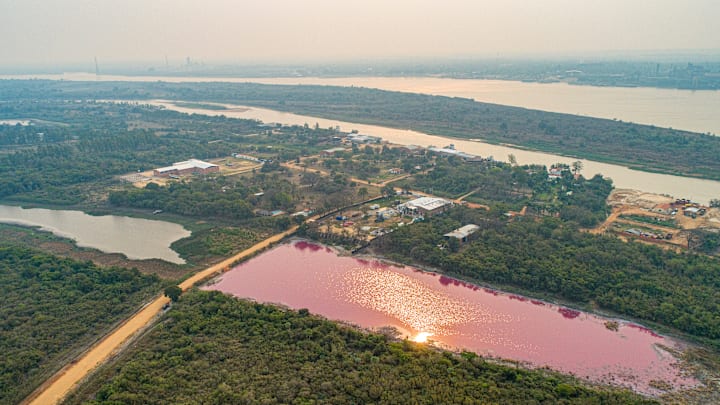There are many oddities within our world. Some reveal themselves as unique cultural traditions, while others may make us wonder about phenomena such as underwater waterfalls. The earth is a scientifically magical place filled with ever-changing scenery and climate. Many of these natural wonders have been recorded and studied, but who's to say how many more remain hidden in the wilderness, escaping our curious eyes?
In the South American country of Argentina, there's a secret place where the lovely, bright blue, transparent water sometimes changes to pink. Nestled in the beautiful southern Patagonia region of the country lies the stunning pink lagoon. People come and go, speculating why the water is such a color and taking their turn to photograph the oddity. But is it safe? What should visitors know beforehand?
The formation of the pink lagoons
We are all quick to blame aliens, climate change, and political parties for most of Earth's problems. However, the water didn’t turn pink because aliens or kids tampered with it. The reason is not a happy one, and like most dilemmas on Earth, humans are the cause.
The Corfo Lagoon, located roughly 20 miles outside of Trelew, Argentina, is a severely polluted lake, and the pollution is due to one industry: seafood. The unfortunate cause of the pale to deep pink water is sodium sulfite, used to preserve shellfish. The sodium sulfite causes very serious issues to those allergic to shellfish, so it isn't just the shrimp or other shellfish they need to avoid. It may be a surprise, but the food industry uses sodium sulfite for much more than just shellfish. Some sodium sulfite-treated foods are potatoes, dried fruit, vinegar, wine, beer, and fruit juice. It is also commonly used in the pulp and paper industry as a preservative. The sodium sulfite in this exact location is used to treat the stains of the shrimp's exoskeleton.
No swimming allowed
Seafood industries preparing to ship shrimp and prawns for exportation use sodium sulfite for its antibacterial properties. The result is pink water, which typically dissipates after a few days. Fish factories along the Chubut River in Chubut Providence have been to blame for many years. The pollution runs its course through the river and ends up in the lagoon. The seafood industry is to blame for the bright pink waters of Corfo Lagoon. Lucky for them, the waters most recently affected are all on private property so fewer people are able to get near the area.
It is disappointing that this pink lagoon isn't out of a fairytale but is from a horror movie. However, places do exisit on our planet where the lovely lake water sometimes turns pink for a reason unrelated to chemicals and humans. Be sure to tune back in for our article on the amazing and natural pink bodies of water on Earth!
